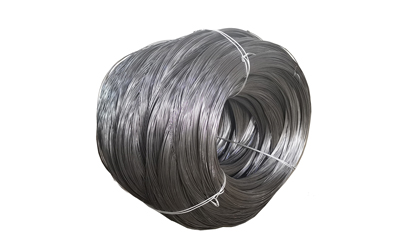Welding Techniques for Strengthening Balcony Railings and Ensuring Safety
ديسمبر . 19, 2024 18:46
The Importance of Welding in Balcony Railing Construction
Welding plays a crucial role in the construction of various architectural elements, and balcony railings are no exception. As a vital safety feature, these railings not only enhance the aesthetic appeal of a building but also serve to protect individuals from potential falls. This article explores the significance of welding in the fabrication of balcony railings, the various methods of welding, and the materials commonly used.
Ensuring Safety through Structural Integrity
Balcony railings are essential for safety, providing a barrier that prevents accidental falls, particularly in multi-story buildings. The structural integrity of these railings hinges on the quality of welding used during their construction. Properly welded railings can support significant weight and withstand various external forces such as wind and human pressure. Inadequate welding, on the other hand, can lead to catastrophic failures, resulting in injuries or even fatalities.
Good welding practice ensures that the joints between different components of the railing are strong and durable. This is especially important since balcony railings are often exposed to harsh outdoor conditions, including rain, wind, and UV radiation. Effective welding techniques reinforce these joints, allowing them to perform reliably over time.
Various Welding Techniques
Welding can be performed using different techniques, each suited for specific materials and applications. The most common methods used for balcony railing fabrication include
1. MIG Welding (Metal Inert Gas) This method is popular for its speed and ease of use. MIG welding uses a continuous wire electrode and a shielding gas to protect the weld pool from contamination. It is suitable for welding aluminum, stainless steel, and mild steel, which makes it a versatile choice for balcony railings.
2. TIG Welding (Tungsten Inert Gas) Known for producing high-quality and precise welds, TIG welding is ideal for thinner materials. It requires a higher level of skill compared to MIG welding but results in clean and strong joints, making it an excellent option for decorative or artistic railings.
welding balcony railing

3. Stick Welding (Shielded Metal Arc Welding) This method is often used in outdoor settings due to its ability to work well in various environmental conditions. Stick welding is ideal for thicker materials and is commonly utilized in heavier-duty balcony railings where additional strength is necessary.
Materials Used in Balcony Railings
The choice of material for balcony railings significantly impacts their durability, maintenance, and appearance. Common materials include
- Steel Galvanized steel is a popular choice for its strength and resistance to corrosion. It is available in various finishes and is often painted or powder-coated for added protection.
- Aluminum Lightweight and resistant to rust, aluminum is favored for contemporary designs. It is easy to handle and can be finished in multiple colors, making it a visually appealing option.
- Stainless Steel Known for its durability and modern aesthetic, stainless steel is often used for upscale balcony railings. While it can be more expensive, its low maintenance requirements and resistance to corrosion make it a worthwhile investment.
Conclusion
Welding is an indispensable part of balcony railing construction, ensuring both safety and aesthetic appeal. By utilizing proper welding techniques and choosing appropriate materials, builders can create railings that not only enhance the architectural beauty of a structure but also provide reliable protection for its occupants. As urban spaces continue to grow and evolve, the importance of high-quality balcony railings, supported by excellent welding practices, will remain a priority in building design and safety. Investing in professional welding services and quality materials ensures that balcony railings will endure the test of time, concluding that good welding is not merely a craft but a critical component of construction safety.




















